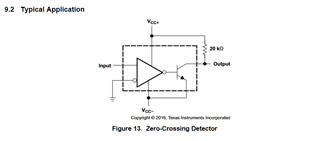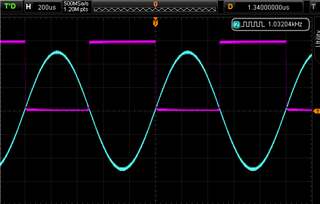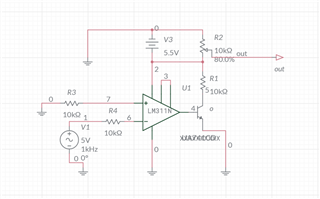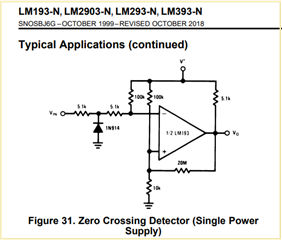Other Parts Discussed in Thread: LM393-N, LM311, TL331, LM339, LM393
I'm using the LM311N/LM211P in a basic zero crossing detector circuit as in Fig 13. below with a pull-up voltage divider to give 3.3V logic output. The attached scope pictures (1V per division) show the oscillations on both edges at frequencies between 1kHz-3kHz. The output is more stable at higher frequencies above 6kHz.
The input is coming from a function generator, 1kHz 5V PP sine wave. comparator supply: single +5.5V - 0.
I tried some of the suggestions on page 12 of the datasheet "CIRCUIT TECHNIQUES FOR AVOIDING OSCILLATIONS IN COMPARATOR APPLICATIONS" but has not resolved the issue.
Tried a separate power supply for the output, it didn't make any difference.
am I missing something here, is it possible to get a stable output in the 1kHz-3kHz range without using a dozen resistors/capacitors for such a basic task?
is there any modern easier to use comparators better suited for this type of application that you can recommend?
Thanks.







